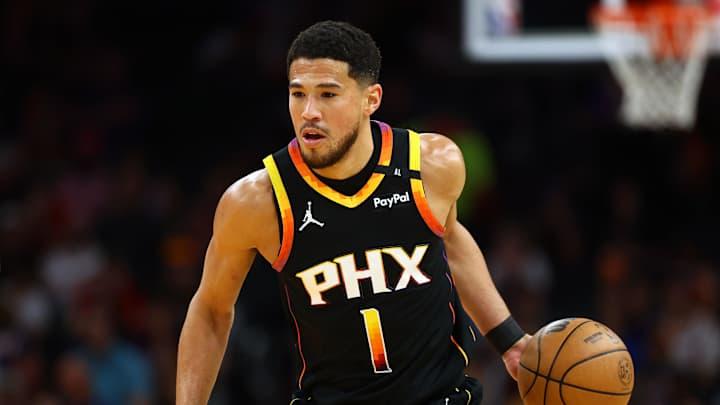The Phoenix Suns’ recent roster adjustments have sparked widespread debate among fans and analysts alike, with many quick to assign harsh grades to the moves. However, a closer examination reveals that these changes may not be as detrimental as initial assessments suggest. This article delves into the nuances behind the SunsŌĆÖ roster overhaul, exploring the strategic intentions and potential benefits that could redefine the teamŌĆÖs outlook in the upcoming season.
Phoenix Suns Roster Moves Reassessed Beyond Initial Reactions
After an initial wave of skepticism, a closer examination reveals that the SunsŌĆÖ recent roster moves may hold more promise than first impressions suggest. Rather than detracting from the team’s core strength, these changes strategically align with long-term sustainability and flexibility. The front officeŌĆÖs focus appears to be on balancing veteran presence with emerging talent, mitigating salary cap concerns while leaving room for future acquisitions. Key departures might seem like a setback on paper, but the Suns have streamlined their rotation, aiming to cultivate a more cohesive and resilient unit for the upcoming seasons.
Key considerations behind the roster adjustments include:
- Boosting cap space to pursue a high-impact free agent in the next off-season
- Enhancing depth with younger, versatile players who fit Phoenix’s fast-paced system
- Prioritizing team chemistry and minimizing redundant skill sets
| Player | Role Change | Impact |
|---|---|---|
| Devin Booker | Unchanged | Primary Scorer, Team Leader |
| New Additions | Bench Depth | Versatility & Energy |
| Departed Veterans | Salary Relief | Financial Flexibility |
Analyzing Team Chemistry and On-Court Synergy Post-Changes
Adjusting to roster changes is never a simple equation, especially for a team like the Phoenix Suns, where chemistry has historically been a foundation of success. Early observations in the preseason highlight a surprisingly rapid build in on-court connections despite significant personnel turnover. The key lies in the adaptability demonstrated by the core players, who are actively integrating new teammates into their system. This dynamic has fostered a series of promising early interactions, marked by enhanced ball movement, unselfish play, and improved spacing ŌĆō all critical factors that often elude post-trade lineups. Coaching staff reports emphasize swift bonding sessions, paired with strategic drills designed to accelerate familiarity.
Breaking down synergy into tangible elements reveals why the SunsŌĆÖ new-look squad has not only maintained but, in some aspects, elevated their collective game. Consider this quick comparison of key synergy metrics from recent scrimmages:
| Synergy Metric | Pre-Changing Roster | Post-Changing Roster |
|---|---|---|
| Assist Rate (%) | 62.4 | 64.7 |
| Offensive Rebounds per Game | 9.1 | 9.5 |
| Turnover Rate (%) | 13.2 | 12.8 |
| Net Rating | +4.8 | +5.1 |
Key takeaways:
- Increasing assist rate displays growing unselfish play and better ball movement despite roster turnover.
- Maintained or improved rebound metrics indicate strong hustle and positional awareness from new teammates.
- Lower turnover rate points to developing familiarity and communication efficiency.
- Positive net rating reflects on-court effectiveness, suggesting the chemistry is translating to results.
Key Player Development Opportunities That Could Shift the Season
Among the roster shifts, the development paths of certain Suns players stand out as potential game-changers this season. Devin BookerŌĆÖs leadership evolution remains pivotal; stepping beyond scoring to orchestrate plays could markedly elevate the SunsŌĆÖ offensive fluidity. Meanwhile, Cameron JohnsonŌĆÖs refined shooting touch and defensive versatility position him as a reliable secondary scorer and perimeter stopper, adding crucial depth on both ends of the floor.
Other players with breakout potential include rookies and young role players who bring fresh energy. The growth prospects for Abdoulaye N’Diaye and Nico Mannion center on increased minutes and confidenceŌĆöopportunities that could translate into valuable contributions. The collective improvement of these individuals may not only obscure the impact of early losses but also recalibrate the SunsŌĆÖ strategic dynamics as the season progresses.
Strategic Adjustments Suns Should Prioritize Moving Forward
The Suns must focus on enhancing team chemistry to maximize the potential of their revamped roster. Integrating new players requires a tailored approach to optimize on-court synergy and foster strong communication. Prioritizing player roles and establishing clear offensive and defensive schemes will be essential to prevent lapses that contributed to past inconsistencies.
Additionally, PhoenixŌĆÖs coaching staff should emphasize defensive versatility to counter increasingly dynamic NBA offenses. This involves adopting flexible defensive sets that allow seamless switches and exploiting fast-break opportunities generated from stops. Targeted adjustments in rotations and minute distribution can create a more balanced workload, preserving energy for critical game moments.
- Focus: Player role clarity and chemistry-building
- Defense: Incorporation of adaptive defensive schemes
- Rotation: Smart minute allocation to optimize performance
| Priority | Key Action |
|---|---|
| 1 | Establish consistent player roles |
| 2 | Implement versatile defensive rotations |
| 3 | Optimize bench usage for energy management |
The Way Forward
In conclusion, while initial evaluations of the Phoenix SunsŌĆÖ recent roster changes have skewed negative, a closer examination reveals a more nuanced picture. The adjustments, though met with skepticism, may provide the team with valuable flexibility and untapped potential moving forward. As the Suns continue to recalibrate their lineup, the true impact of these moves will become clearer on the court, challenging early assessments and highlighting the complexities behind team-building in the NBA.




